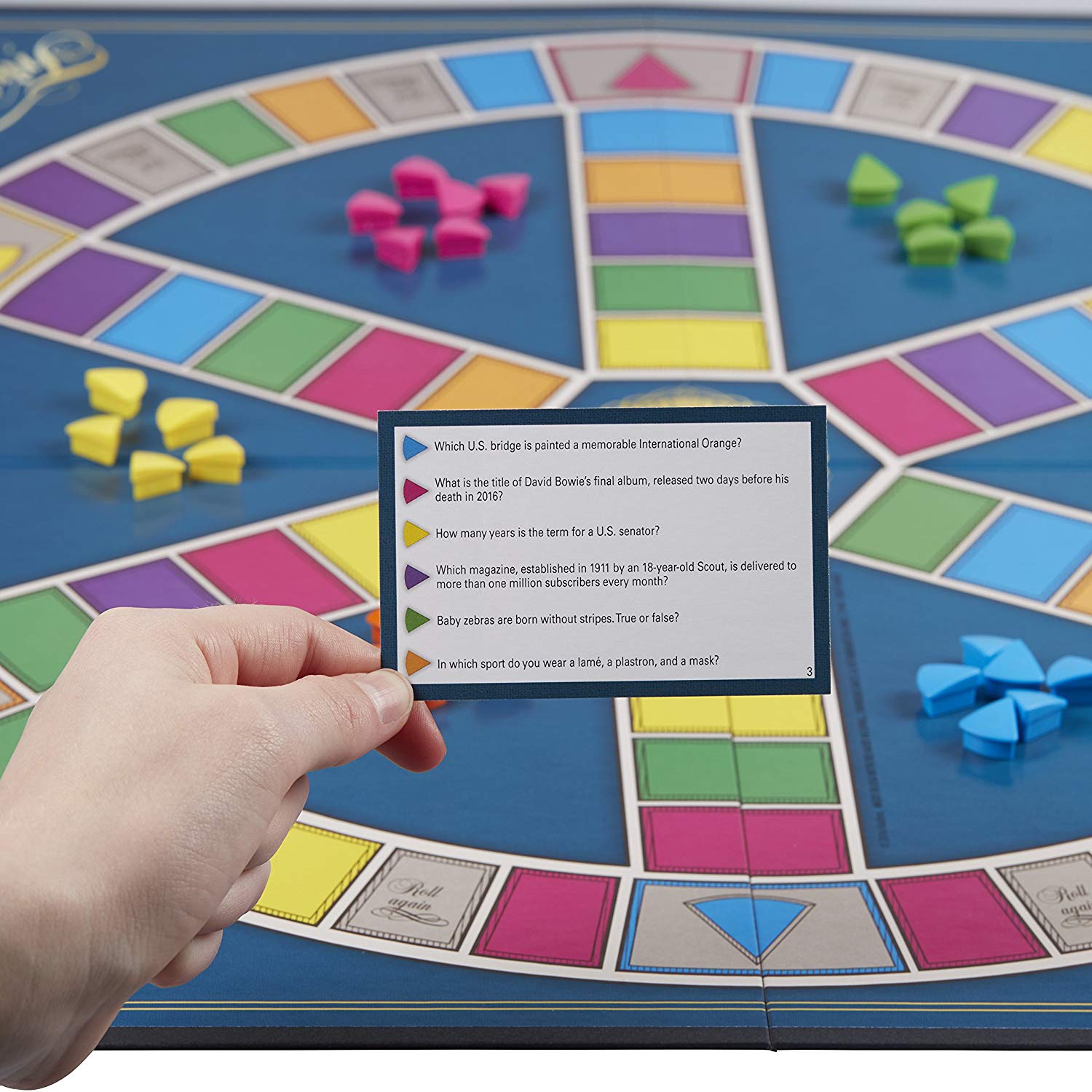
Three of them were during Trivial Pursuit: The Interactive Game and one was during Trivial Pursuit: The Classic Game.Ī question would be shown on the screen, along with four choices, and the answer would be revealed 10 seconds later. Originally, ten "Trivial Pursuit" playbreaks were interspersed throughout FAM's game show block. The show launched a series of "interactive" games called playbreaks, all produced by Martindale and his associates. If there was extra time at the end of the show, an audience member was called on stage and given the opportunity to answer five multiple-choice questions (much like the "Interactive" portion of the show) worth $20 apiece, for a maximum payoff of $100. If the champion managed to complete all six categories and fill the pie within the time limit, he/she won the grand prizes. Answering incorrectly or passing left the category blank, and a question would not be played again in it until all of the remaining categories were played.Įach correct correct answer awarded the contestant $100. Each category was played one at a time in sequence, starting with Geography and ending in Sports & Leisure.Īnswering a question in a category correctly caused its respective wedge to light up in the pie. To accomplish this, the champion needed to correctly answer one question in each of the six basic categories within 45 seconds. The day's champion played the bonus for a trip and $1,000 in cash. The winner of the game received $500 cash, a prize, and a chance to play the bonus round.īonus Round: The Trivial Pursuit Challenge Round If time was called, the player who had filled in the most wedges in their pie was declared the champion. The final round continued in this manner until either a player completely filled in his/her pie, therefore becoming the day's champion, or time was called, whichever happened first. If nobody answered correctly, another toss-up was played to determine control. If the player in control missed a question, the question was fielded as a toss-up for the other two players and the one who answered correctly received control and the half-wedge, if it had not already been filled in on his/her pie. The round started with a toss-up question and the first player to ring-in and answer correctly was given control of the game, keeping it as long as he/she kept answering questions correctly. The final round again used the traditional basic categories as in Round 1, but the round was played in a different manner. When chosen, the player who answered an audio or video question correctly had an opportunity to answer a follow-up question which awarded the player $100 and another half-wedge in the color of their choice with a correct answer. Rounds 2 and 3 included three special questions known as "Bonus Questions" hidden behind three of the categories-one in one half of the round and two in the other. (In early episodes, the questions related to a certain year in history.) The category sets used were different each show and were borrowed from multiple versions of the board game. In the second half of Round 2 (later known as Round 3), a new set of categories were played. The second round used either the categories from the Movie Edition or Television Edition.

In the first round, the six traditional Trivial Pursuit categories were used. A correct answer lit up a wedge but an incorrect answer gave the two opponents a chance to ring-in and steal the wedge with a correct answer. In the first three rounds, each player received two turns consisting of a category choice followed by a question posed by host Martindale. Each wedge was a different color and represented a different category, with the categories requiring two correct answers to fill a wedge. This round was played in the same way as Round 1, except the three highest-scoring players won a prize and a chance to play Trivial Pursuit in the next half-hour show.Īs in the board game, the object for each player was to fill in all of the colored wedges on a large pie-shaped game board in front of them.



After five questions, the six players with the highest scores played round two and the other players were eliminated. They scored points based on how fast they answered the question correctly, with a maximum of 1,000 points available. The players had 10 seconds to answer by pressing a number from 1–4 on a keypad in front of them. Nine players (originally twelve) competed for three spots in the second half of the show.įive questions with four multiple-choice answers were asked by the host. The first half was an interactive game show, while the other half was a traditional game show.


 0 kommentar(er)
0 kommentar(er)
